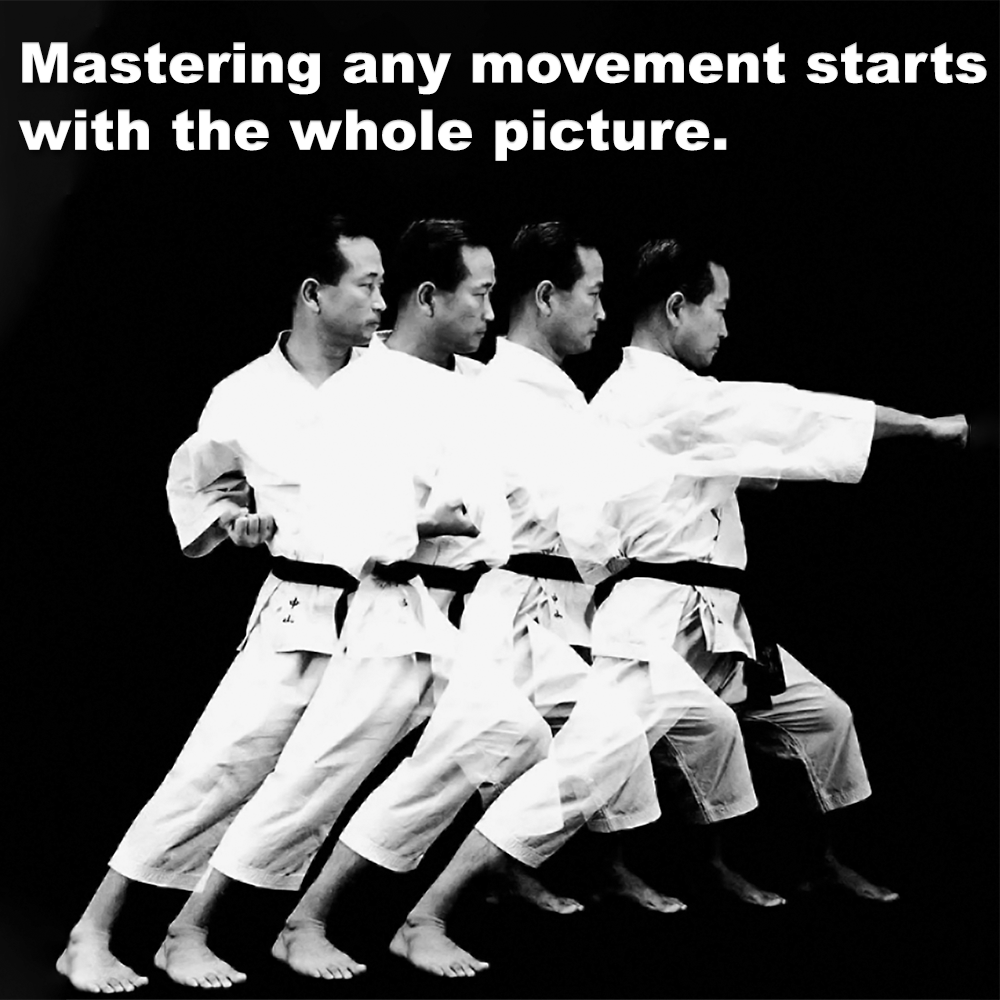
Mastering any movement starts with the whole picture.
Posted by ADAM CARTER on APR 21, 2024

Mastering any movement starts with the whole picture.
(2 minute 2 second read)
When reading anything, it’s crucial to approach it from start to finish, right?
Skipping to the end of a book might reveal “who done it,” but you’d miss out on all the best bits in-between.
Recently, a commenter on my article “The best fight is the one you avoid. So don’t start a fight you can’t finish, but if you do, finish it.” – failed to see the importance of viewing the whole message. They believed I was advocating for starting fights, which couldn’t be further from the truth.
Each part of the title of my article emphasizes a crucial element. Lets break it down:
“The best fight is the one you avoid.” – This emphasizes the importance of de-escalation and situational awareness, essential elements of self-defense.
“So don’t start a fight you can’t finish.” – This highlights the need to assess situations carefully and engage only if confident in your ability to defend yourself.
And finally; “But if you do, finish it.” – This acknowledges that sometimes, conflict is unavoidable, and it’s crucial to respond effectively to a threat. Sometimes, preemptive action is necessary.
Did you miss those elements too?
Putting things into context is paramount.
As I pondered this, it reminded me of trying to explain to my students that the notion of grasping the entire message translates perfectly to understanding many of the techniques everyone practices. The full sequence holds the key.
Practitioners often focus solely on the end result, missing the crucial elements at the beginning and middle of the movement.
Many people are fixated on trying to make their technique look the best, and as a result, they fail to see anything else when performing that technique.
It’s important to look at the beginning, the middle, and the end of any technique to truly understand what is going on.
If these crucial elements are ignored, you can miss out on important parts of the movement, such as evasion, angle adjustment, parrying, limb control, or other ways to control your opponent. These sequences form a set of principles for responding comprehensively to a situation.
So what does it all mean?
Just like reading a book, or one of my articles, take in the whole thing, put it in context. Look at the entire movement rather than just the end of the technique.
Fixating on its name can also limit your understanding. Movements shouldn’t be pigeonholed into single techniques. Instead, consider them as fluid patterns of motion with various applications.
Understanding things from different perspectives and contexts is key. When trying to analyze the movements in your kata, look beyond the label and try to grasp the underlying principles. This may help you adapt and respond effectively in different ways than you perhaps first thought.
So, the next time you encounter information or find yourself in a potentially threatening situation, remember: read the whole story, understand the context, and look at the bigger picture.
